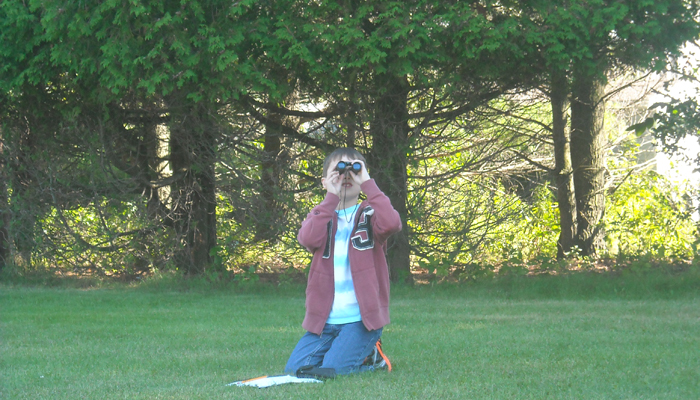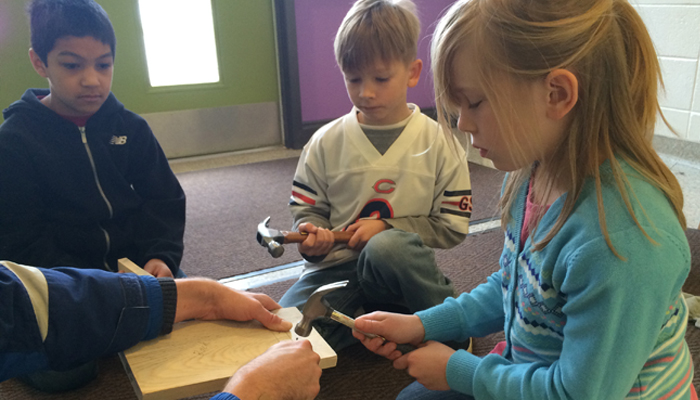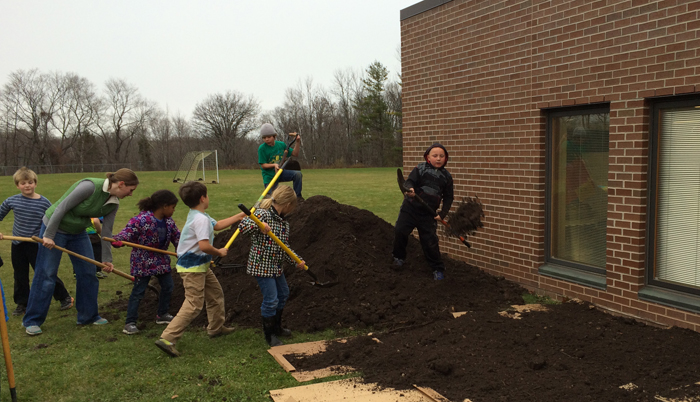This year, second and third grade students are on a journey to understand how animals, people, and plants adapt to our local environment. During the first trimester, students have been working through the essential question, “How can I create an environment to attract birds and share my information with the ESAA community?” In order to answer this larger question, students asked and answered many wonders using the creative process.
The first portion of the question included developing understanding about the environment around ESAA and the birds that share this space with us. This is closely tied with the first step in the creative process: observation and discovery. Students went on weekly bird-watching expeditions and learned to identify and search for local birds. As students’ observational skills improved, they were able to discover elements of the local environment that birds were most attracted to and apply that knowledge to the designs of our own bird garden that will be planted in the spring. Additionally, a local bird watcher visited to share her expertise with the class. The students were able to ask questions and receive feedback to improve their bird watching practices.
Students were asked create scientific drawings of birds throughout the trimester. As observation and discovery progressed, so did students’ drawings. Students learned how to give respectful, specific feedback on other students’ sketches, and in turn, learned to receive and utilize the feedback. It has been incredible to watch students’ sketches transform into very detailed, scientific drawings thanks to specific feedback from classmates. After completing his final sketch, one student exclaimed, "I never thought I would be able to draw like this!"
Through drama, students learned about attraction and the specific elements that make a space attractive for people. In each second and third grade classroom, a space (“ultimate spot”) was created that was intended to draw the immediate attention of anyone entering the room. Additionally, students simulated aspects of a bird's life including food gathering and supply and demand. They then collaborated to create simulations of their own. Drawing on knowledge gained while observing and researching birds, students began with an objective, added rules, and then taught the game to the rest of the class.
During this process, daily classroom reader’s workshop time focused on building students’ background knowledge about birds. Students used authentic texts at their own level to research birds and simultaneously learn about and apply reading comprehension strategies such as the use of non-fiction text features, text-to-self and text-to-text connections, and comparing and contrasting. Students became experts at using field guides to identify birds and learn new information. This excitement transferred into students’ independent weekly library choices as well. Students quickly memorized the location of bird books and could be seen walking back from the library carrying thick volumes of bird encyclopedias.
Students’ background knowledge was also built through music, art, and movement. In music, students studied the sounds birds make. They created a bird call sound to go along with a modification of the book Goodnight, Owl by Pat Hutchins. In art, students designed, built, and painted their own bird feeder or bird house using recycled materials and plaster gauze. They also used their scientific sketches to learn the art of printmaking. In movement, students studied the way birds move and learned about pathways and flocking.
The last section of the essential question for this trimester challenged students to find a way to share what they have learned with the ESAA community. With ideas ranging from a weather-proofed ipad case to putting a tv in the garden, students decided to create their own field guide. This decision led to the continuation of research, another essential component of the observation and discovery phase of the creative process. Classroom Writer’s Workshop time included time for students’ reflection on learning, research of new information, and to create a page for the class field guide.
Through research and observation, students discovered several elements that would help attract birds to our garden, including bird houses, baths, and feeders, and decided to build them for our garden. Mrs. Faul’s class designed and built birdhouses, Mrs. Pekarek’s class, bird baths, and Mrs. Pasche’s class, bird feeders. Students used the engineering design process to enter the creation phase of the creative process. Instead of jumping into building, the engineering design process guides students through a cycle of asking, imagining, planning, creating, and improving their products. As students completed their creations, they presented their learning to a variety of audiences including to buddy classes, parents, and the Sheboygan Area School District Board of Education.
As students reflected on the trimester-long project, many students noted that one of the changes in their daily life is that they now observe birds everywhere. This ability to look closely and describe is a skill that students will utilize throughout their lives beyond the classroom.







